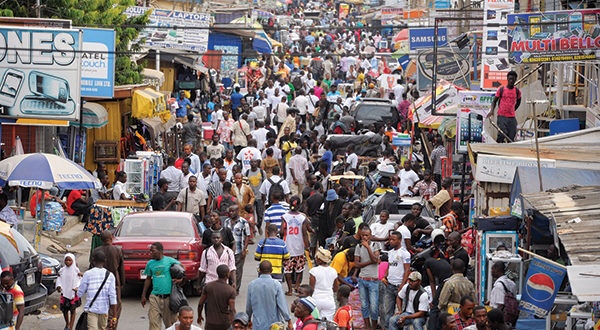According to Dr. Peter Takyi Peprah, Assistant Chief Statistician and Director of Field Operations for the Ghana Statistical Service (GSS), around 57% of the country’s population resides in metropolitan regions.
According to the Population and Housing Census of 2021, metropolitan areas are now “absorbing” the strains of a big population.

This was stated by Dr. Peprah during a virtual symposium on family and urbanisation organized by the Ministry of Gender, Children and Social Protection and the Department of Social Welfare to commemorate International Family Day.
In 1993, the United Nations General Assembly passed a resolution (A/RES/47/237) establishing the 15th of May as the International Day of the Family.
The day is observed to recognize the significance of the family, raise awareness of issues pertaining to families, and expand knowledge of the social, economic, and demographic dynamics that impact families.
The purpose of this year’s event with the topic “Families and Urbanisation” is to raise awareness of the significance of family-friendly, sustainable urban policy.
Dr. Peprah stated that Greater Accra rose by one million people between 2010 and 2021, followed by Ashanti Region with two hundred thousand and Western region with one hundred thousand.
The Eastern and Ahafo regions, on the other hand, showed negative figures, indicating that the number of individuals migrating to these regions has decreased since ten years ago.
He stated that practically every region in the country experienced population growth, with the bulk going to urban areas.
The majority of persons who moved to urban regions were young adults with a median age of 29 years, with 53.8% men and 40.4% females, according to the Census data.
It was reported that 47.3% of the population had never been married, which affected the country’s median age at first marriage, median age at first birth, and overall fertility rates.

Dr. Peprah defined urbanisation as the process of an increase in the population reported to reside in “urban” localities.
He ascribed the rise in rural-to-urban migration to factors such as greater employment chances, educational prospects, technology, the availability of power, water, an enhanced transportation system, and cultural, social, and recreational attractions.
The Director observed that people who relocated to cities ended up living in slums and were sometimes worse off than their rural counterparts.
Due to economic challenges and the establishment of an unsanitary environment, he stated that urbanization fostered social vices such as prostitution, armed robbery, illegitimate offspring, and terrorism.
Mrs. Euphemia Akos Dzathor, a Development Practitioner, defined family violence as any act or threat of conduct that caused another family member bodily, psychological, emotional, social, economic, or sexual distress.
She emphasized that the phenomena of power relations was at the core of all the elements that influenced domestic violence, given that the husband was regarded as the family’s head with complete control according to the country’s household structure.
She stated that violence could result in worry, depression, and other mental health difficulties, wrecking havoc on the family’s tranquility and well-being.
Mrs. Dzathor asked for the sensitization of family members in order for them to fulfill their roles for peaceful coexistence effectively.
Professor Spenser Duncan, an Economic Management Consultant, observed that recent marriages were based on convenience, change, crisis, and compulsion, such as when a person travels to a location and is compelled to marry owing to the necessity for certain documents.
He stated that migration from rural to urban areas must be systematized and that leaders or guardians must guide migrants through the necessary procedures to avoid them from becoming stranded.